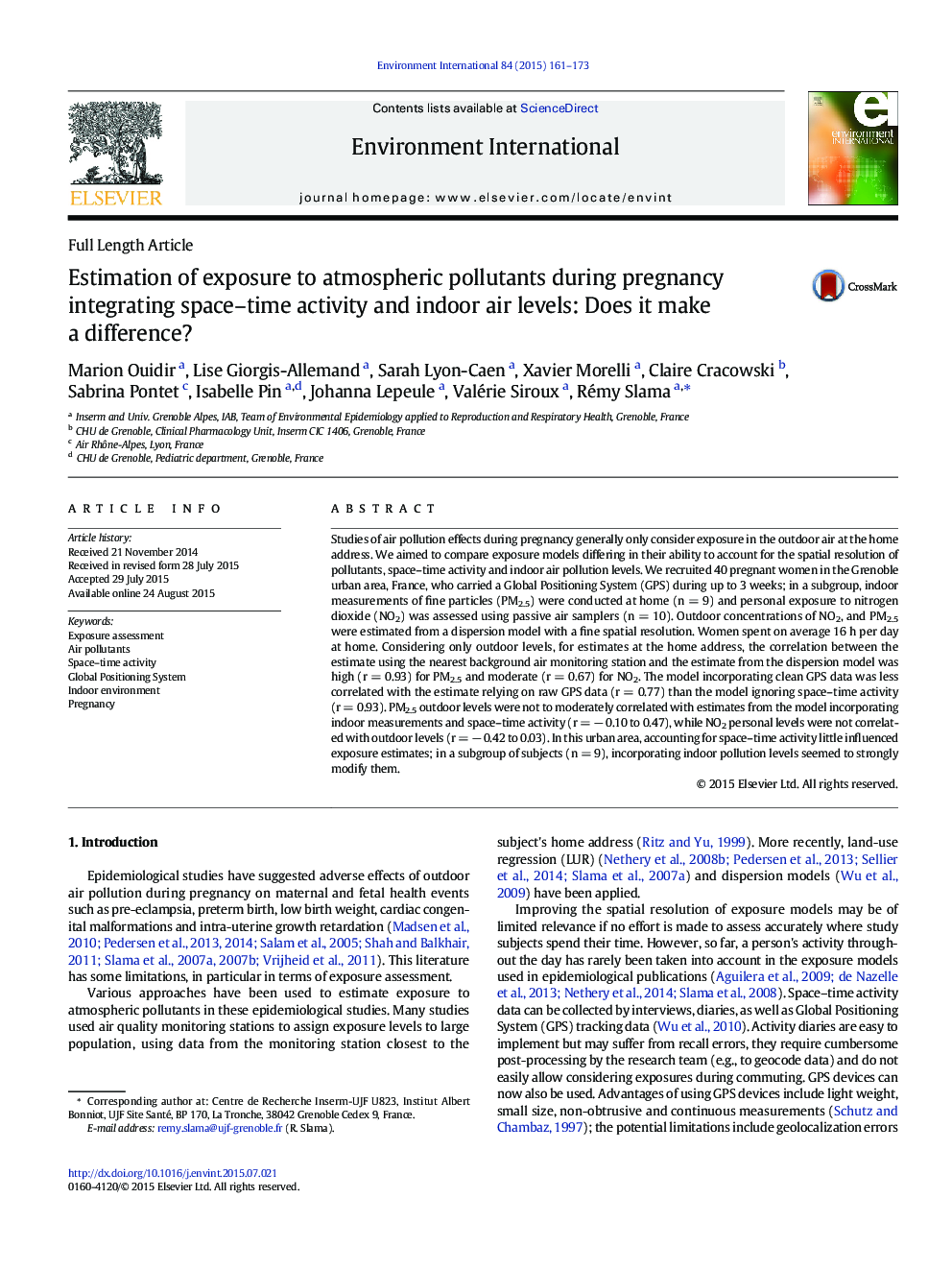| Article ID | Journal | Published Year | Pages | File Type |
|---|---|---|---|---|
| 6313457 | Environment International | 2015 | 13 Pages |
Abstract
Studies of air pollution effects during pregnancy generally only consider exposure in the outdoor air at the home address. We aimed to compare exposure models differing in their ability to account for the spatial resolution of pollutants, space-time activity and indoor air pollution levels. We recruited 40 pregnant women in the Grenoble urban area, France, who carried a Global Positioning System (GPS) during up to 3 weeks; in a subgroup, indoor measurements of fine particles (PM2.5) were conducted at home (n = 9) and personal exposure to nitrogen dioxide (NO2) was assessed using passive air samplers (n = 10). Outdoor concentrations of NO2, and PM2.5 were estimated from a dispersion model with a fine spatial resolution. Women spent on average 16 h per day at home. Considering only outdoor levels, for estimates at the home address, the correlation between the estimate using the nearest background air monitoring station and the estimate from the dispersion model was high (r = 0.93) for PM2.5 and moderate (r = 0.67) for NO2. The model incorporating clean GPS data was less correlated with the estimate relying on raw GPS data (r = 0.77) than the model ignoring space-time activity (r = 0.93). PM2.5 outdoor levels were not to moderately correlated with estimates from the model incorporating indoor measurements and space-time activity (r = â 0.10 to 0.47), while NO2 personal levels were not correlated with outdoor levels (r = â 0.42 to 0.03). In this urban area, accounting for space-time activity little influenced exposure estimates; in a subgroup of subjects (n = 9), incorporating indoor pollution levels seemed to strongly modify them.
Related Topics
Life Sciences
Environmental Science
Environmental Chemistry
Authors
Marion Ouidir, Lise Giorgis-Allemand, Sarah Lyon-Caen, Xavier Morelli, Claire Cracowski, Sabrina Pontet, Isabelle Pin, Johanna Lepeule, Valérie Siroux, Rémy Slama,
